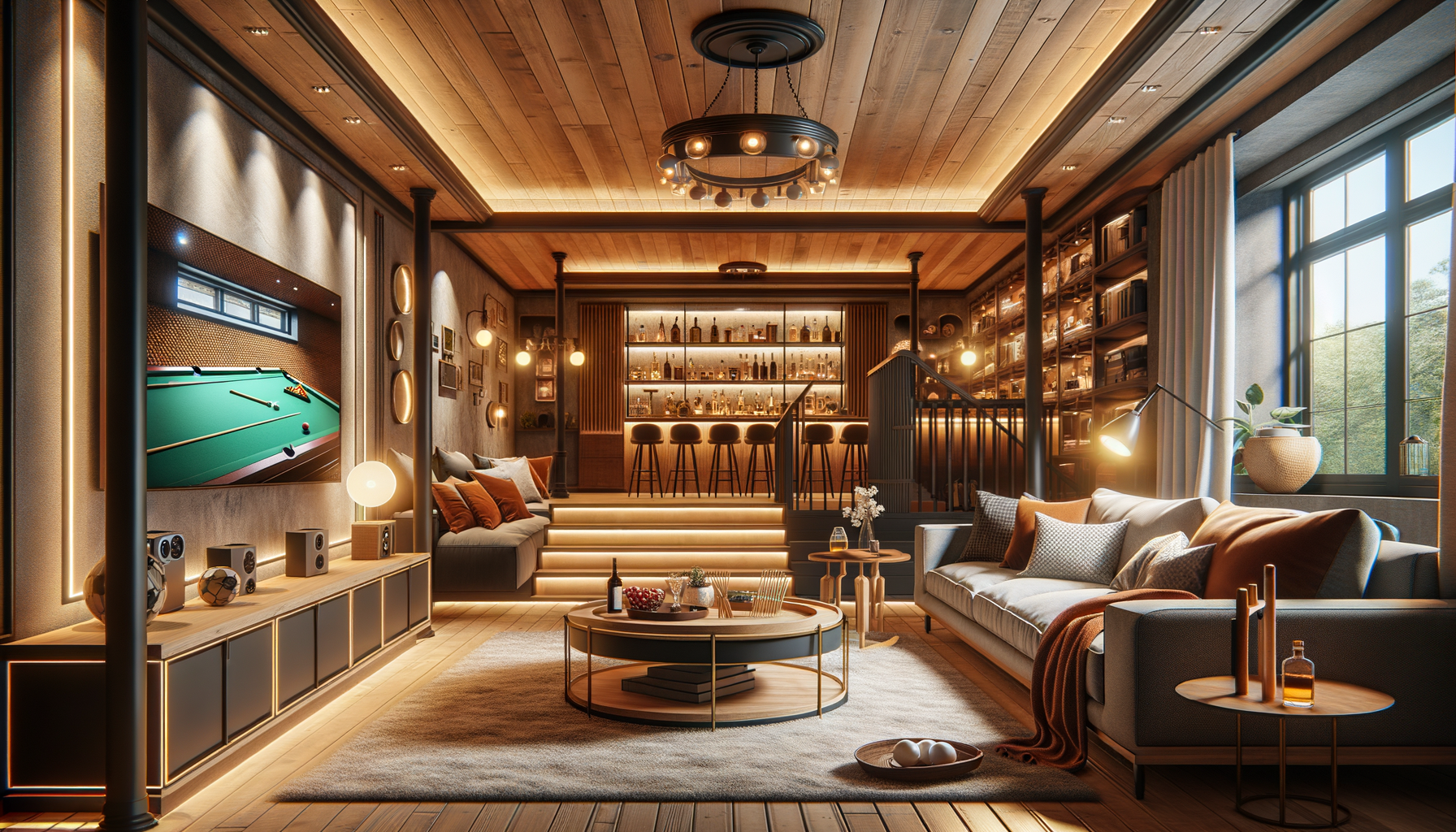Understanding the Potential of Your Basement
When considering a basement remodel, the first step is to recognize its potential. Basements are often underutilized spaces, frequently relegated to storage or laundry areas. However, with thoughtful planning, they can be transformed into vibrant, functional spaces that add significant value to your home. The possibilities are virtually limitless: from creating a cozy family room or a home theater to establishing a guest suite or a home office. The key is to identify your needs and envision how the basement can fulfill them.
Before diving into the remodeling process, it’s crucial to assess the current condition of the space. This involves checking for issues such as moisture, leaks, or structural concerns. Addressing these problems early can prevent future complications and ensure a smooth remodeling process. It’s also essential to consider the layout and how it aligns with your intended use. For instance, a basement intended as a family room might require an open layout, while a home office might benefit from partitioned spaces.
To make the most of your basement’s potential, consider the following:
- Determine the primary function of the space.
- Evaluate existing structural and environmental conditions.
- Plan for necessary repairs or modifications.
- Consider future needs and potential resale value.
By understanding the potential of your basement, you lay the groundwork for a successful remodel that meets your needs and enhances your home’s overall appeal.
Design and Layout Considerations
Designing the layout of your basement is a critical step in the remodeling process. The layout should reflect the intended use of the space while maximizing functionality and comfort. When planning the design, consider the flow of movement and how different areas will interact. For example, if you’re creating a combined living and entertainment space, ensure there’s a seamless transition between seating areas and entertainment zones.
Lighting plays a vital role in basement design, as these spaces often lack natural light. Incorporating a mix of ambient, task, and accent lighting can create a warm and inviting atmosphere. Additionally, choosing lighter color palettes for walls and furnishings can help brighten the space, making it feel more open and airy.
Another important consideration is the ceiling height. Basements often have lower ceilings, which can make them feel cramped. To counteract this, opt for low-profile furniture and consider creative solutions like recessed lighting or exposed beams to add visual interest without sacrificing headroom.
Here are some design tips to consider:
- Use multifunctional furniture to maximize space.
- Incorporate mirrors to create an illusion of more space.
- Define zones with rugs or furniture arrangement.
- Ensure adequate storage solutions to keep the area clutter-free.
By carefully considering the design and layout, you can create a basement that is not only functional but also aesthetically pleasing.
Budgeting for Your Basement Remodel
Budgeting is a crucial aspect of any remodeling project, and basements are no exception. Setting a realistic budget involves understanding the scope of the project and the costs associated with different elements. Start by listing all potential expenses, including materials, labor, permits, and unforeseen costs. It’s advisable to allocate a contingency fund, typically around 10-15% of the total budget, to cover unexpected expenses.
The cost of a basement remodel can vary significantly based on factors such as size, complexity, and the quality of materials chosen. For instance, high-end finishes and custom features will increase the overall cost, while opting for standard materials can help keep expenses in check. It’s important to strike a balance between quality and affordability to ensure a successful remodel.
To manage costs effectively, consider the following strategies:
- Obtain multiple quotes from contractors to compare pricing.
- Prioritize essential elements over luxury features.
- Consider DIY options for tasks within your skill set.
- Explore financing options if needed.
By taking a strategic approach to budgeting, you can ensure that your basement remodel stays within financial limits while achieving the desired outcome.
Choosing the Right Materials
The choice of materials can significantly impact the functionality and aesthetics of your basement remodel. Given the unique environment of basements, it’s important to select materials that are durable, moisture-resistant, and suitable for below-ground conditions. For flooring, options such as vinyl, tile, or engineered wood are popular due to their resilience and ease of maintenance.
When it comes to walls, consider moisture-resistant drywall or paneling to prevent mold and mildew. Insulation is another critical component, as it helps regulate temperature and improve energy efficiency. Choose insulation materials that offer good moisture resistance, such as foam board or spray foam.
In addition to practicality, aesthetics should also play a role in material selection. Choose finishes and colors that complement the intended design theme and create a cohesive look throughout the space. Opt for materials that reflect your personal style while ensuring they are practical for basement use.
Here are some material selection tips:
- Opt for moisture-resistant and durable materials.
- Consider the ease of maintenance and cleaning.
- Choose materials that align with your design vision.
- Evaluate the cost-effectiveness of different options.
By carefully selecting the right materials, you can create a basement that is both functional and visually appealing, standing the test of time.
Adding Personal Touches and Finalizing the Space
Once the major elements of your basement remodel are complete, it’s time to add personal touches that make the space truly yours. Personalization is key to transforming a basement into a welcoming and comfortable environment. Consider incorporating elements that reflect your personality and lifestyle, such as artwork, family photos, or unique decor pieces.
Furniture and accessories play a significant role in defining the character of the space. Choose furnishings that complement the design theme and provide comfort and functionality. Add soft furnishings like cushions and throws to create a cozy atmosphere, and consider incorporating greenery to bring a touch of nature indoors.
Finalizing the space also involves ensuring all systems are functioning properly. Conduct a thorough inspection to check for any issues with plumbing, electrical, or HVAC systems. Address any concerns promptly to prevent future problems and maintain the integrity of the remodel.
Here are some tips for adding personal touches:
- Incorporate elements that reflect your interests and hobbies.
- Use color and texture to add depth and personality.
- Ensure the space is functional for its intended purpose.
- Regularly update decor to keep the space fresh and inviting.
By adding personal touches and finalizing the space, you can create a basement that not only meets your needs but also feels like an integral part of your home.








